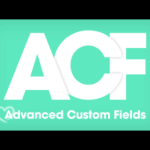What applications can you make with the lessons learned from the previous two posts?
Sometimes it seems hard to bring up the best in your own fantasy on what you could do with the powerful combination of custom post types, custom fields, custom taxonomies in the back-end and Beaver Themer in the front-end.
WordPress was from the original design principles a ‘blogging machine’. So posts in text, combined with to be imported media, categories and tags were the base of how WordPress should work. Even ‘static’ pages did not get that much attention in the time that you could not even create a menu.
In the years 2010 version 3 did get the support for custom post types and also the native menu support was added. Version 3 was a major milestone in the history of WordPress. Custom fields were there all the time, but most of the time the basic enduser left them behind, because theme developers in most cases ignored on how to use them in the front-end.
Plug-in developers started to develop their plug-ins based on custom post types during the development of WordPress 3.0
The WordPress developers still think custom post types and custom fields are mainly for devlopers. In some way they are right. But with the arrival of pagebuilders things changed. Their support for custom post types, custom taxonomies and custom fields makes it possible to build custom applications.
And of course the creation of custom post types, custom taxonomies and custom fields was getting easier with the help of Custom Post Types UI, Advanced Custom Fields, Pods, Toolset, Meta Box and some other helpful tools to get the work done without most PHP programming.
Well, what can you build with all of this?
First of all, let’s start with ‘just’ posts. There are already some ‘fields’ around posts, like publication date, excerpt and author. Of course you could add any ‘meta data’ within the main textblock, but that does not offer a unified structure.
Think for example about a reference URL’s field, to which the author could refer as resources which supports the article. Think about a list of books, which could be added as a reference to the article. And what do you think of a list of authors (with profile pictures) who contributed to the article?
You would probably ask yourself what happens in the front-end if you leave custom fields empty. In general you could you this little routine which disables the placement of a row or module if a field connection is empty. More specific you could use the ‘conditional’ options in Beaver Themer.
Beyond basic posts
You could make any kind of simple catalogue. A catalogue consists of a structured set of fields and/or taxonomies. You could make a business directory with location data like address (street and city), phone number, logo, website, e-mail address, a Google Map (made with the address fields), contactperson and so much more.
Examples: business directories, book catalogues, holiday parks, hotel lists, a list of museum items, shopping center lists in a town and many more.
Searching is WordPress is ‘a little basic’. For seraching custom post types, it’s fields and taxonomies, you could use the plug-in Relevanssi. The free version support all of the required functionality.
It is up to your own of your customers imagination on what kind of catalogue you need to build. Take good care of the so called ‘data model’, in other words the CPT’s/CF’s and taxonomy defintions, before you start to build the solution. Also make the right choices for the various field types which are needed, like checkbox, date, time, URL, e-mail address, text(box), number etc.
A simple events calendar could also be one of the basis applications you could make, you could even combine some of the required custom fields with a form, so that participants for an event could register without the need to fill in all the fields (Both GravityForms and Formidable Pro can connect with custom post types and fields).
More complex solutions with links between speakers/teachers, seminar locations and dates could better be made with one of the well-known plu-ins like ACF, Pods, Toolset or Pods, where you can create relations between the various posttypes. We explained a full example in this blogpost using the Pods approach.
‘Things you have done‘, might be another example, showcasing your work, with fields like ‘kind of project’, a summary textblock, a possible button to more detailed background information, an image for just a logo or basic overview image of the project, possible name of client.
We do experience in so many cases that companies just use one page to show all they have done for their clients. Not very well structured, so that Google will notice all the different cases very well. To make each ‘case’ a custom post, will for sure be an better way to index your content.
And so much more
So, there can be done a lot of things to make your content or the content of your clients so much better structured for searching and displaying, compared to just some pages.




